#portrait of a young lady by sandro botticelli
Text
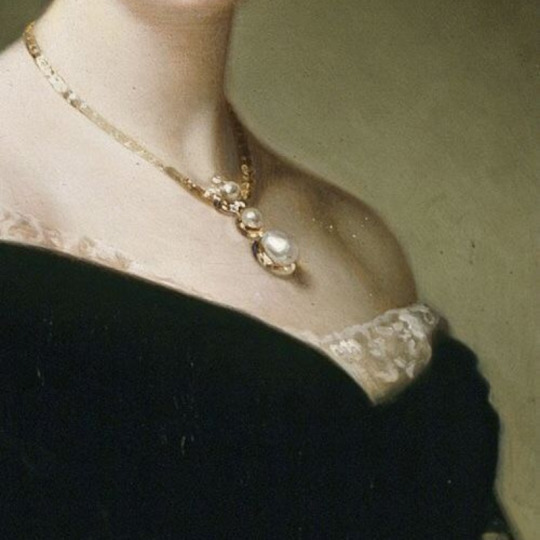

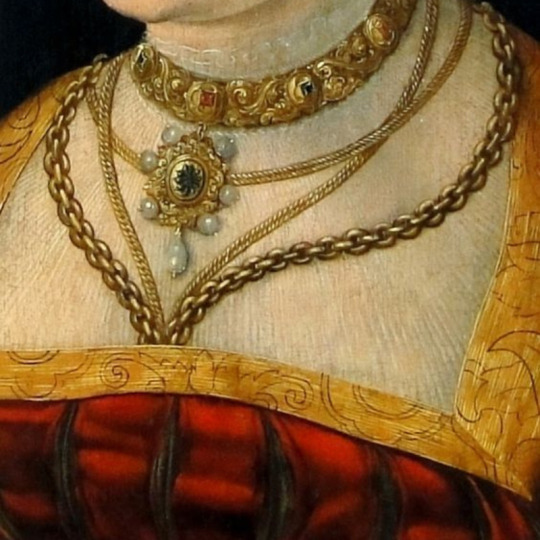
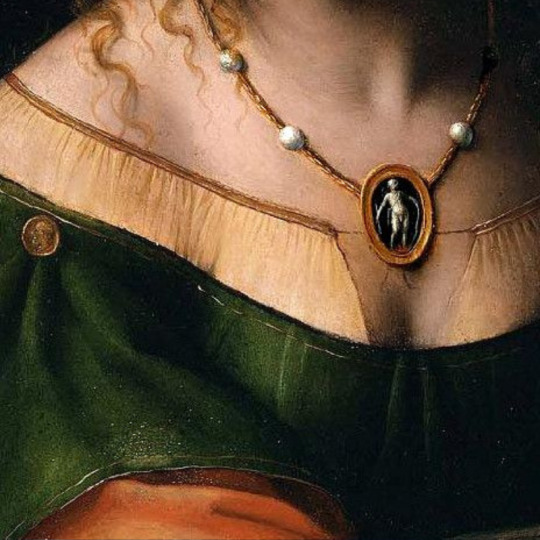

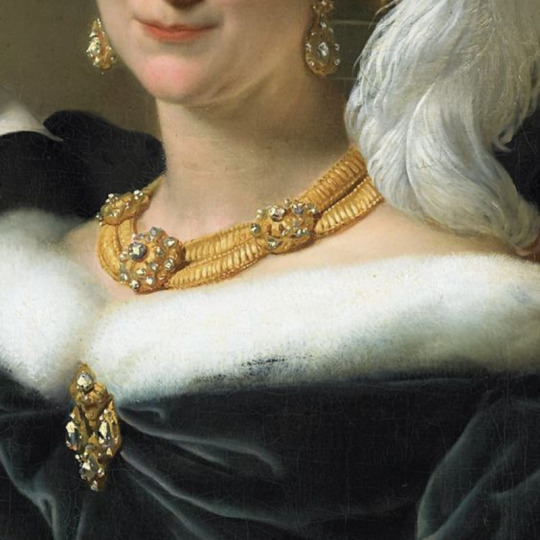

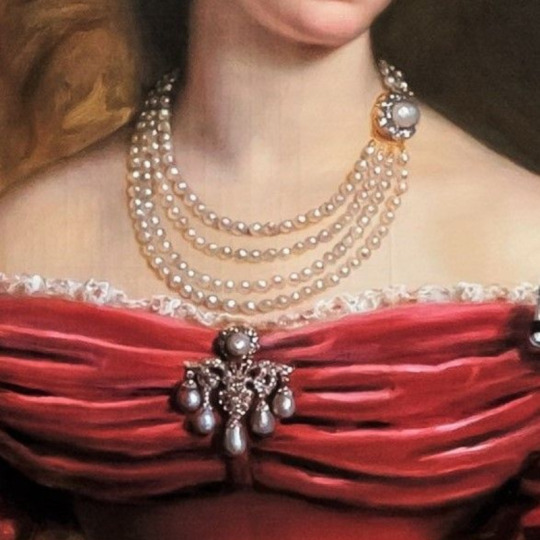
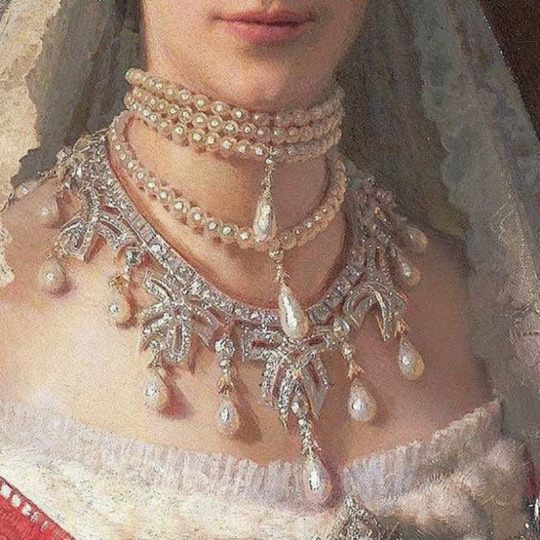




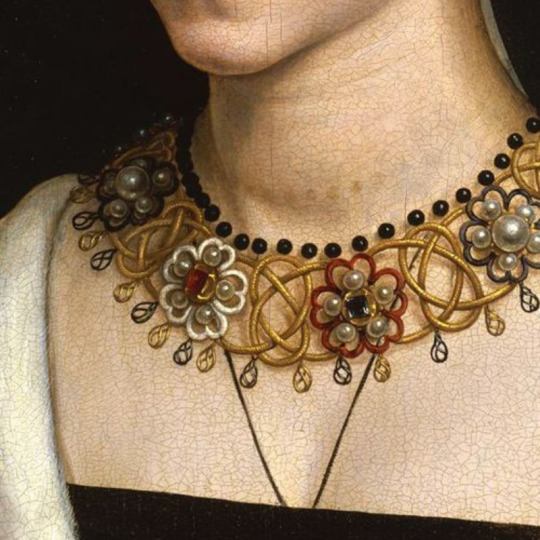
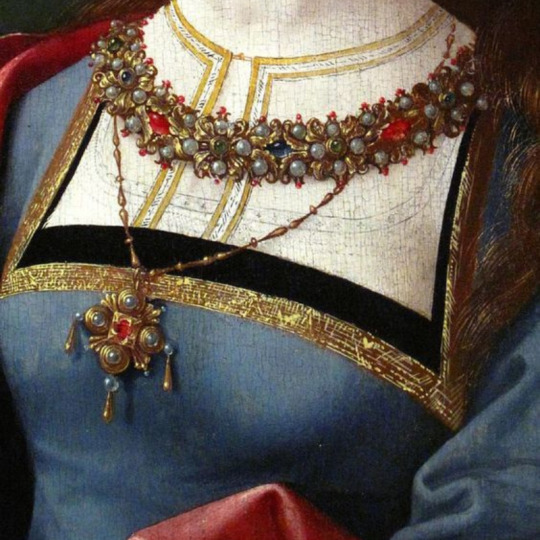
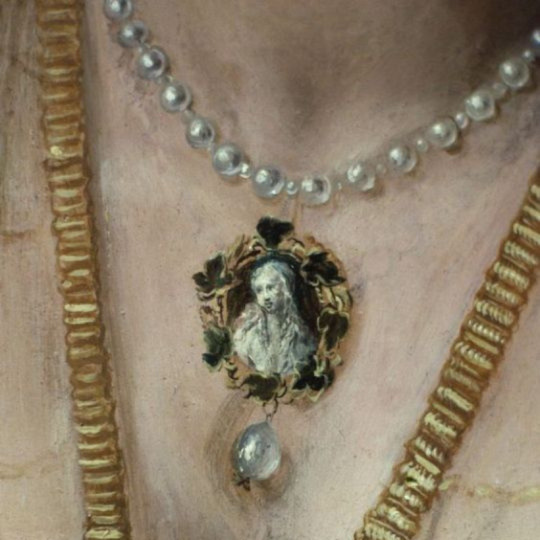
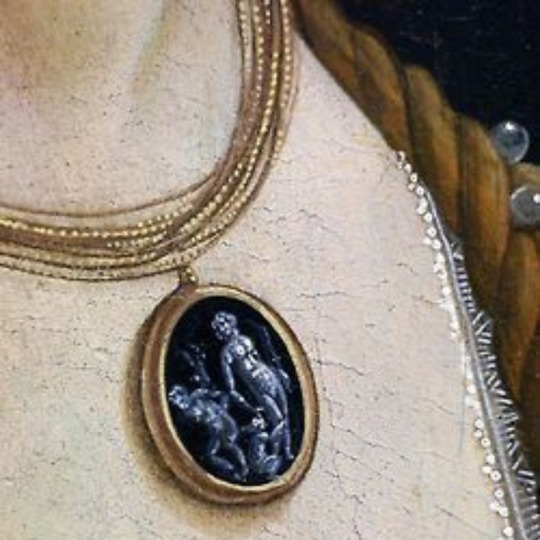

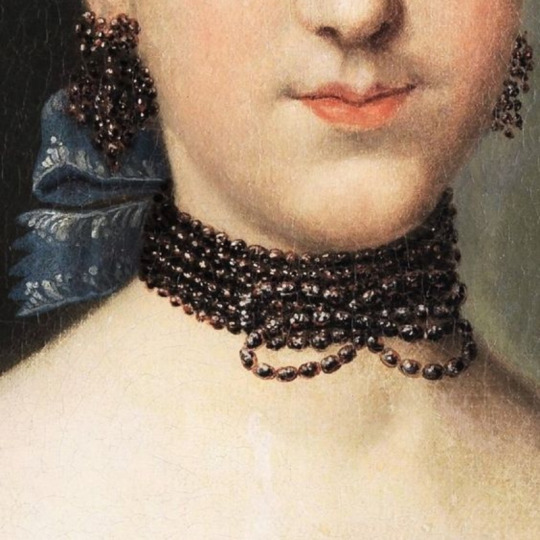



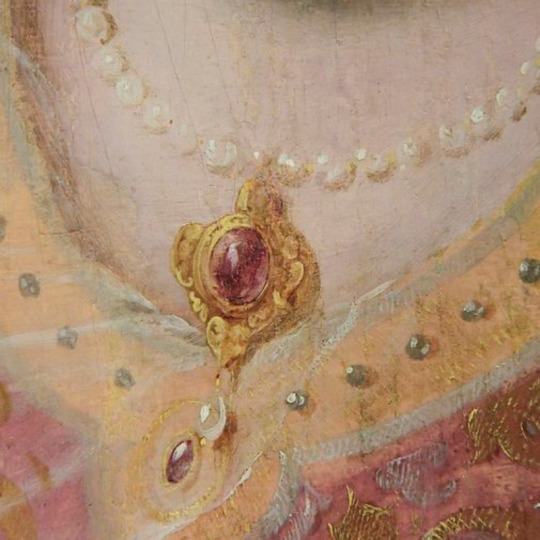

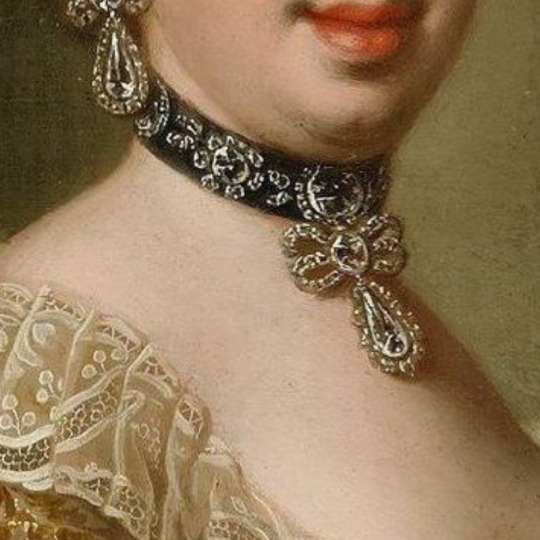
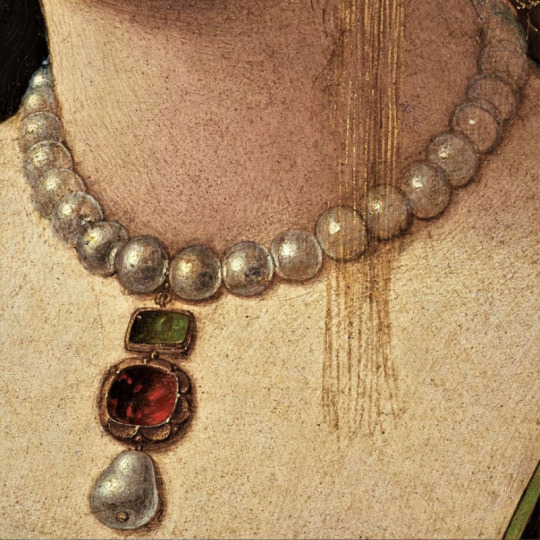
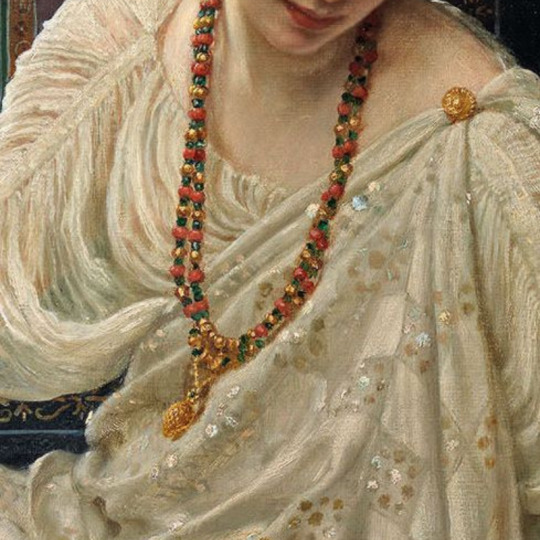
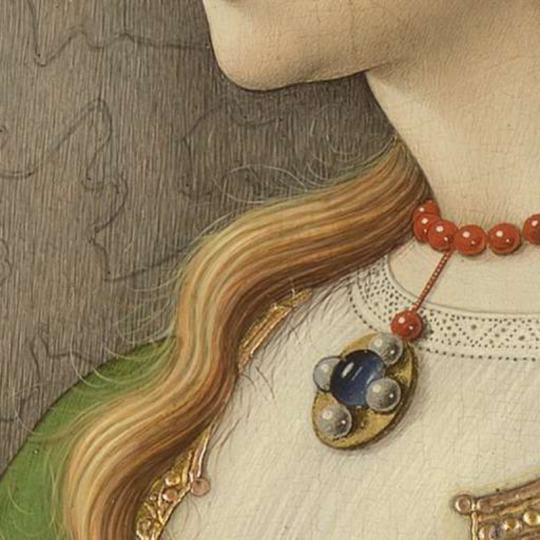

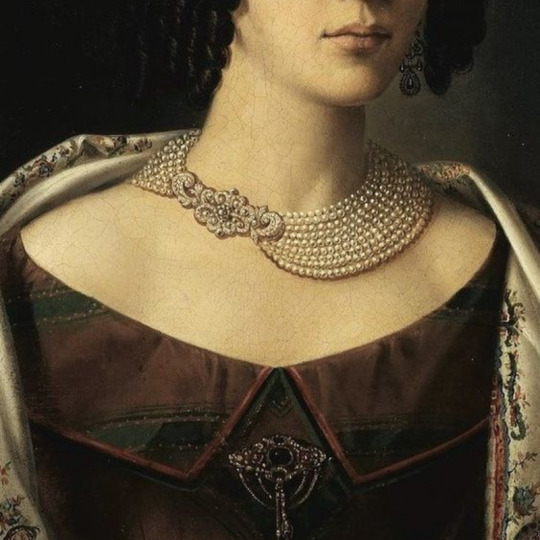
necklaces/chokers + art
#concepcion remisa de moret by federico madrazo#sorry some of these might not have titles because searching these through googles is virtually impossible#lucas cranach the elder by unknown#salome with the head of john the baptist by bernardindo lunini#portrait of a lady by aristeidis oikonomou#not sure unknown by unknown?#the painting is by mortiz stifter#princess louisa of prussia by jean baptise van der hulst#not sure#cant find the artist#i think this is by cornelis le mair#the girl in the painting is hortense de beauharnais but i dont know the artist#artist is markos kampanis#maria portinari by hans memling#i cant find the artist nor the painting but i do know thats a tutor gown#portrait of a lady by pedro campana#portrait of a young lady by sandro botticelli#cant find artist nor painting#young noblewoman with a rose by johann heinrich#artist is bartholmeus van der helst#painter is antonio moro#the subject is mary edward hogarth but i cant find the artist#painter is frans hals#painter is andrea solario#unknown by unknown (cant find it)#portrait of a lady in red by bernardino zaganelli#circe by edward john poynter#mary madalene by carlo crivelli#lady mary wortley montagu by joseph highmore#well i know the location is 19th century russia but cant find the artist
7K notes
·
View notes
Photo

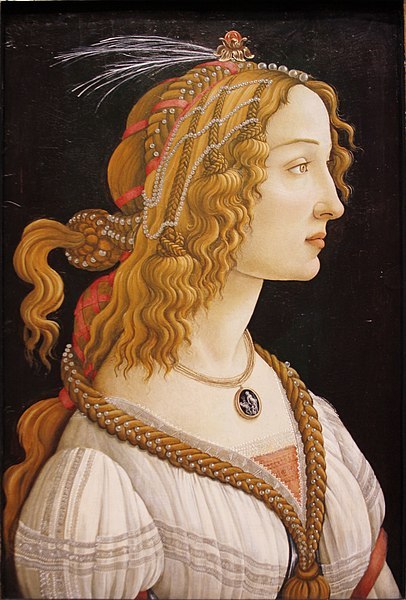
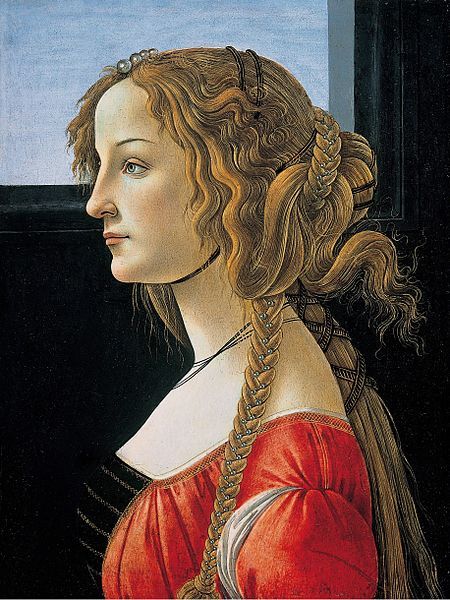
On a recent rewatch of Merlin, I noticed the unusual hairstyle on this maid character in the episode “The Dragon’s Call” (Season 1, Episode 1). It reminds me of these two portraits by Sandro Botticelli, Idealised Portrait of a Lady (Portrait of Simonetta Vespucci as Nymph) and
Profile portrait of a young woman, probably Simonetta. It’s an unusual choice for a lower class character, since these portraits are more a representation of nobility.
5 notes
·
View notes
Photo

Sandro Botticelli Profile Portrait of a Young Lady ca.1476-80
33 notes
·
View notes
Photo
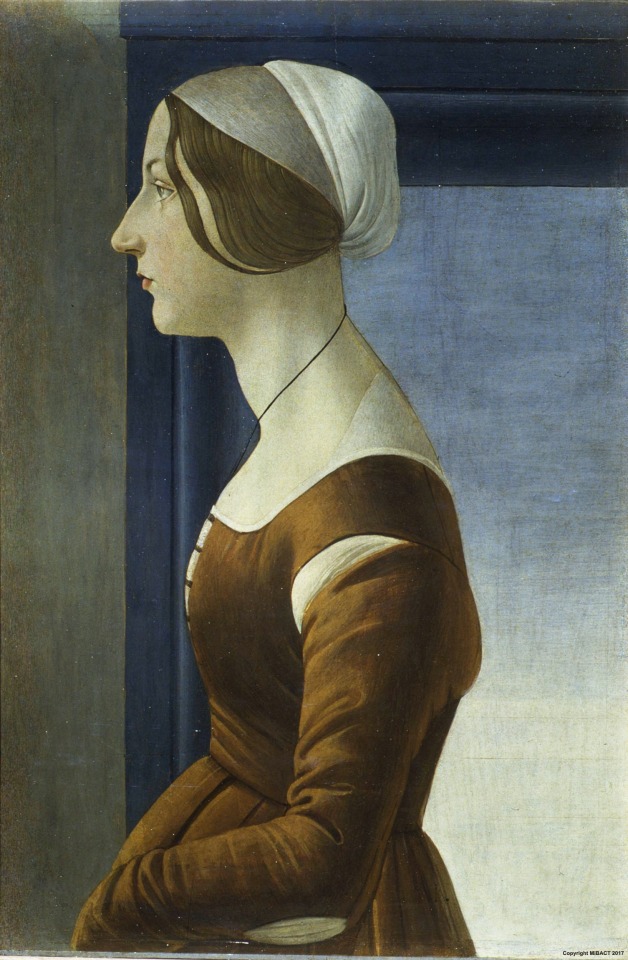
Portrait of a lady (c.1485). Sandro Botticelli (Italian, 1445-1510). Tempera on wood. Pitti Palace.
The painting is also known by the title “Bella Simonetta”, based on an early identification of the young woman as Simonetta Cattaneo, a Genoese noblewoman who went on to marry the Florentine Marco Vespucci in 1469 and was loved by Giuliano de’ Medici. In the tradition of Italian portrait painting in the early Renaissance, the woman is depicted in profile, a pose which enabled the artist to faithfully represent facial features, hairstyles and clothing which were essential indicators of the subject's social status. However, in this case the woman wears no jewelry and is not shrouded in excess luxury: the sophistication of the gown, a gamur, is portrayed only by its crimson color, very much in fashion at the time, and the puffed sleeves created by the cuts in the fabric, separated from the gown itself. As well as her beauty, the portrait appears to emphasize the woman's modesty and demure nature.
44 notes
·
View notes
Text
The Masquerade Ball
Hiya folks, here’s a new chapter of the wlw story set in the Italian Renaissance suggested by @scottishqueer for the wlw writing project...hope you will enjoy it!
This chapter contains reference to Palazzo Schifanoia, a Renaissance palace I highly recommend everyone to visit if they ever stay in Ferrara. Not sure if you’re interested in knowing more than this but just in case, here’s the link to the Wikipedia page.
If you do happen to like this miniseries, please consider spreading the word!
Previous chapters: After The Storm, The Florentine Lady, A Remedy For Melancholy
Previous series: Ancient Greece
________________________________
The night of the masquerade I'm beaming. My costume is just as I pictured it and gorgeous: every flower, every little detail is perfect. I only wish Riccardo would have chosen a costume matching mine but he was adamant to surprise me so Neptune it is. We don't look bad together, though.
The ball hall is opulent and extravagant: the torches lighten up frescoes portraying a banquet of the ancient gods, the music is loud and the room filled with the perfume of essences and mulled wine. It's magic, as always. The Duke himself in the attire of Caesar comes welcoming me and my husband. He praises my costume and beauty before offering his apologies for walking away with my Riccardo. I mock a despaired face that succeeded in making us all laugh then I join my friends. Maria is dressed up as a Roman matron while Virginia is the queen of the ball or at least I'm positive she will be tonight: her costume is inspired to the colourful bird from the West Indies and she's absolutely gorgeous. We all take a goblet of wine and discuss the latest rumours: will Lucrezia Borgia be the Duke's wife? Nothing has been confirmed at the moment but the whole court is already gossiping about it. Virginia is not happy with it: the Borgias sound shady. I note that all Duchies are shady to some extent. She's about to contradict me when she stops mid-sentence and points behind my back.
"I'll be damned if that's not the Florentine lady!"
I turn and yes, she's there. I'm pleased to see she followed my advice: I recognise my sketches. She's at the arm of a man that I wager be her husband, the right hand of Rossetti, and they wear matching costumes: he's the Sun and she's the Moon. Not so original but they look nice together. They're whispering words to each other when our eyes meet across the room. She waves in my direction and whispers something to her husband. He smiles too in my direction and courtly tips his hat, bowing his head before being approached by a guest.
Cristina makes her way through the crowd towards us. As she approaches, I notice how her costume, although not most refined, looks gorgeous on her. The ivory tunic and mask match the pale tone of her skin perfectly. The brightness of her eyes catches you by surprise as they sparkle like gems at the light of the torches.
She greets us, bowing her head, and accepts a goblet of mulled wine from a servant. If she's nervous as she has every reason to be at her first public appearance, she conceals it well.
"You look lovely tonight, lady Cristina" Virginia comments, and I'm grateful she's not jumping at her throat.
"Absolutely" I agree and add with a smirk. "And you found me quite easily"
Cristina takes a sip of wine.
"You don't go unnoticed" then as if correcting herself she addresses the three of us. "Your costumes are wonderful, the best ones I've seen so far. Hope you will get a prize at the end of the night"
My friends start talking of prizes and winners and previous balls and costumes until I lose interest and turn towards Cristina. She does the same.
"And who are you tonight?" she asks.
"What's your guess, Moon?" I smile, showing my costume with a twirl.
"I'd say Flora or a silvan nymph, even if..."
"Even if?"
She looks at me, probably wondering whether to share a confidence or not. Then she shakes her head and smiles.
"Have you ever seen a painting called 'The Spring' by Sandro Botticelli?"
"I can't say I have, no"
"Let me guess, is it in Florence?" Maria intervenes and I'm displeased by her comment, innocent only for those who don't know her sharp tongue.
Cristina doesn't seem to notice though.
"Yes, I admired it in Florence. The painter is a personal friend of my father" she explains before turning back to me.
"One of the dames, the allegory of Spring, looks just like you tonight. The similarity is striking"
"I demand a local artist to paint me in their next work then" I cheer, rising my goblet.
"Yes, yes a toast! A toast!" Virginia squeals.
We all share a wish to the ball, to us, to me getting a portrait in a fresco. I sink my goblet just as the quintet starts playing a lively saltarello. The guests converge towards the centre of the room to dance.
I lay my goblet on a tray and place a hand on Cristina's arm.
"Ladies, let's s dance this night away!"
I don't have to repeat it twice: my friends immediately run into the crowd to get the best spots. Cristina fidgets with her goblet.
"Hurry, sink that wine and come before the saltarello is over" I say, instinctively pulling her hand.
"But-"
She stiffens for a moment but I pull again, smiling. I won't take no for an answer!
"No buts, drink that wine and come dance with me"
She looks at me for a moment then she laughs too and sinks her goblet before joining me.
She's an excellent dancer, better than I expected...but after all what was I expecting? We jump and twirl at the beat of the tambourines in perfect synchronism, mirroring each other moves until we're out of breath.
I guide her towards the grand balcony to catch some fresh air. The ball is still in full swing and music echoes from inside. A lovely breeze is blowing from the sea not too far from our city: you can smell a hint of salt in it. The moon shines bright up there in the sky, a full moon celebrating with us from afar. A real beauty but tonight my eyes are drawn towards her earthly sister, the Moon leaning over the railing by my side. I find myself wondering if that painter friend of her father has ever painted a portrait of her or added her figure in one of his works: if I were him, I wouldn't hesitate. There is something unreadable yet charming in her grace.
Cristina is now quietly observing the dancers inside, she looks lost in her thoughts. After a moment, she speaks.
"You were right, the ball is truly something"
"See? You should trust me from now on" I smirk.
She meets my gaze and smiles, shyly, before a shadow of melancholy crosses her face again. She diverts her eyes and looks back towards the hall.
I try to find words to cheer her up but she speaks again before I can come up with something. She recites a quatrain.
"How beautiful Youth is
yet it flees!
Be happy if you want to,
For tomorrow is not certain."
The mix of melancholy and softness in her voice is hauntingly touching and dreamy, just like the smile on her lips.
"Lorenzo the Magnificent, Song to Bacchus" she adds, as if to say 'alas, I didn't come up with these lines myself'.
As if pulled by an unknown force, my fingers brush over hers on the railing. The gesture startles her at first but she doesn't retrieve her hand. Instead, she searches my eyes.
"Are you getting sad again?" I wince.
She doesn't answer straight away. For a moment, she just looks at me then she shakes her head.
"No, Emilia, no. I'm jolly tonight" she sighs, parting from the railing. "Be happy if you want to, for tomorrow may not come" she repeats.
Then, to my surprise, she stretches her hand out for me.
"Let's have one more dance, shall we?"
Cristina and I never part till the ball is over and it's time to head back home. We dance and chat and I believe I get to know her a bit better. I like that more than I probably admit. So I'm incredibly happy when a couple of days after the ball I receive a note from her: she invites to another walk. She suggests we could admire a little preview of the new Palazzo Schifanoia: her husband has been reassigned to coordinate the works there to speed up the building process after the recent delays. We can have a look around when it's not too loud and crowded, she says. How could she possibly know I was dying to get a glimpse of the new palace? Was it a lucky guess or am I that easy to read to her? I accept, obviously.
I meet her in front of the palace: on the outside, it doesn't reveal much, it looks like many other buildings in red stone and white marble I am so used to by now. Cristina is waiting for me underneath an arch, she waves at me with a smile. I smile to myself: what a joy to see her finally free from the sorrowful clutches of melancholy. I may be mistaken but her eyes look even brighter than before and I cannot help but notice that even if this is no particular occasion, she is a vision basking in the late sun of the afternoon.
Has her voice always been so sweet?, I wonder as she wraps her arm around mine and leads me inside. If it was, I'm surprised I never noticed.
I have never been inside the palace: when the main corpus was crafted and decorated I was too young to be admitted, barely a child so I only heard the wonders it hosts by older courtiers. Maria must have been here but she has little liking for the arts: to her this probably was simply a place where "escape from boredom". I am by no means prepared to what I am about to see. The corridors are richly decorated and punctuated with statues of rare beauty and I imagine them filled with the music that certainly echoed through these walls. Joyful string music.
It takes me a moment to realise that Cristina is speaking. I stop, slightly embarrassed to be so grossed into the art surrounding us that I almost forgot of my fair guide, my personal Virgilius. Thank God, she doesn't seem bothered at all: her lips curl into an amused yet soft smile when she asks me to close my eyes, if I trust her. The request surprises me: I do trust her but what does she have in store?
"No tricks, I promise" Cristina assures me. "I just want you to experience the real attraction properly" she adds, nodding to the door standing silent in front of us. My eyes wander from it to her before obliging. I close them and curiosity fills me as I hear the unmistakable sound of the door open. A shiver runs through my spine when, still in the darkness, I fell Cristina gently taking my hand into hers and placing the other on my back. She's so close I can smell her perfume just like at the ball night when we danced. My Virgilius guides me inside the mysterious room: our steps echo breaking the silence and I feel as if we were explorers venturing into yet undiscovered lands, our personal West Indies.
We come to a stop and I hear her voice whispering I can open my eyes now.
She doesn't have to tell me twice: I do as she says and...I gape in awe. I have never seen anything like this. The colours of the frescoes are so bright and vivid I wish I could touch them. I move closer and lose myself in the contemplation of their overwhelming beauty.

After a while, I turn back towards my guide with a smile.
"Am I dreaming, Cristina?"
My guide mirrors my smile and joins me by the wall. She stands by my side and takes in the fresco in front of us. This is the Halls of Months, a pagan cycle of allegories of seasons as Olympian Gods proceeding on fanciful cars, and personifications of the constellations of the zodiac, she explains: the one we're looking at is May. I admire every single month, Cristina at my side, before we move to the other room, the Halls of Virtues, where the frescoes have a political flavour: past Dukes beaming in their glory surrounded by the Cardinal and Theological virtues.
I demand we go back to the previous hall that caught my eye and heart. I almost do not recognise Cristina: she is unusually chatty today. Nothing compared to our first meetings. She knows every myth, every story behind the allegories, every little detail and curiosity about the works of the artists who decorated these halls. She even shows me the new section, the one her husband is working on with his brigade. There is still little to see, only the draft of the frescos have been drawn on half the room but she knows what they'll show once finished. I could listen to her all day.
It's almost sunset when we explore the summer loggia overviewing the gardens. I am used to beauty living at the castle but this place is different. The atmosphere is different as if this palace didn't fully belong to this place and time: there's no such thing as Time and space here. We're in another world, a world of our own, close yet magically separated from the Ferrara we know.
As we let our eyes rejoice of the sight of the gorgeous natural wonders below,I ask Cristina where such an extensive knowledge of the works come from. I am genuinely curious and genuinely surprised to hear her saying that her father is a renewed patron of the arts in Florence. He has offered his services to the House of Medici more than once: he tried and failed to be a painter himself when he was younger so he settled for providing money to those he wagers be the most talented artists of our times. Artists and painters visiting and sometimes even working at her family palace has been part of Cristina's life since childhood.
"That is why he wanted me to marry Davide, one of his protege" she explains. "And actually...this may surprise you a little, but it's maybe why I was glad to move here after Sir Rossetti's offer. Your Duke is a patron of arts too and values art above all things: sounded like a nice place to be"
"You didn't seem to like this city much when you arrived" I note but there's no malice in my words.
Cristina hangs her head and sighs.
"It's never easy to leave a place that means so much to you. Davide had his job to keep him busy while I had all the time to think back to what I have left behind, my life there. I had family, friends, connections there...here all was new and stranger"
"Are you still unhappy here?" I inquire, instinctively reaching for her hand.
Her bright eyes travel from my hand to my face.
"No, Emilia, I'm no longer unhappy here."
14 notes
·
View notes
Text
Hair Today, Gone Tomorrow: Women’s Headgear and Hairstyles in Quattrocento Italy.

As a woman of the Italian Peninsula during the quattrocento, whether one was young or old, rich or poor, a woman of leisure or a female member of the workforce, there existed a variety of suitable headgear and hairstyles.
Turban styles (above and below) must have provided a practical solution for working women or busy mothers who did not wish to have their daily activities impeded by long, loose hair.

For the middle-classes, or those fortunate enough to have servants or ladies maids to help with hair styling, hair could be decorously bound in braids, buns or rolls (below).



Women from patrician backgrounds however, took styling and binding to new levels of sophistication by adding garlands and jewels to increasingly elaborate hairstyles.


The veil however, remained a popular choice for young and old, rich and poor alike, and served as a reminder to the casual observer that the wearer wished to be perceived as a woman of virtue. Accordingly, it could be worn alone or in conjunction with other headgear.


Beyond the veil was the mantle, the preserve of matrons and symbol of dignity and respectability.

References: Paola Tinagli, Paola Tinagli Baxter, Paulo Tinagli, Mary Rogers, Women in Italian Renaissance Art: Gender, Representation and Identity, Manchester and New York: Manchester University Press, 1997.
Carole Collier Frick, Dressing Renaissance Florence, Baltimore and London: The Johns Hopkins University Press, 2002.
Ulinka Rublak, Dressing Up: Cultural Identity in Renaissance Europe, Oxford: Oxford University Press, 2010.
Images: Masaccio, Detail of a Female Recipient of Charity from The Distribution of Alms and the Death of Ananias, 1426-27, fresco, Cappella Brancacci, Santa Maria del Carmine, Florence. Web Gallery of Art.
Gentile da Fabriano, Detail of Two Women with Veils Twisted into Turban-like Headgear from Adoration of the Magi, 1423, tempera on wood, Galleria degli Uffizi, Florence. Web Gallery of Art.
Francesco del Cossa, Detail from Allegory of March: Triumph of Minerva, 1476-84, fresco, Palazzo Schifanoia, Ferrara. Web Gallery of Art.
Angelo da Siena, Portrait of a Woman, 15th Century, Tempera on panel, Museo Correr, Venice. Web Gallery of Art.
Piero del Pollaiuolo, Portrait of a Young Lady, 1465, oil on poplar, Gemäldegalerie, Berlin. Web Gallery of Art.
Piero di Cosimo, Portrait of Simonetta Vespucci, c. 1480, oil on panel, Musée Condé, Chantilly. Web Gallery of Art.
Sandro Botticelli, Portrait of a Young Woman (possibly Simonetta Vespucci), 1480-85, tempera on wood, Städelsches Kunstinstitut, Frankfurt. Web Gallery of Art.
Anonymous (Italian, Florentine), Portrait of a Lady in Red, c.1460 - 1470, oil and tempera on wood, The National Gallery London. The National Gallery © 2019.
Fra Filippo Lippi, Portrait of a Woman, 1440-42, tempera on wood, Staatliche Museen, Berlin. Web Gallery of Art.
Domenico Ghirlandaio, Portrait of the Donor Francesca Pitti-Tornabuoni, 1486-90, fresco, Cappella Tornabuoni, Santa Maria Novella, Florence.
Posted by Samantha Hughes-Johnson.
85 notes
·
View notes
Photo
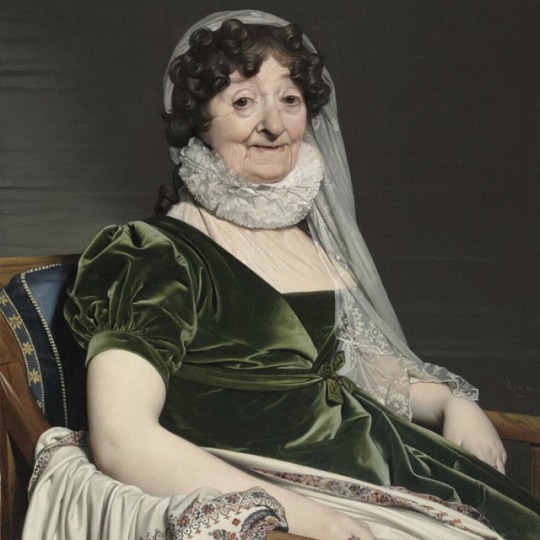
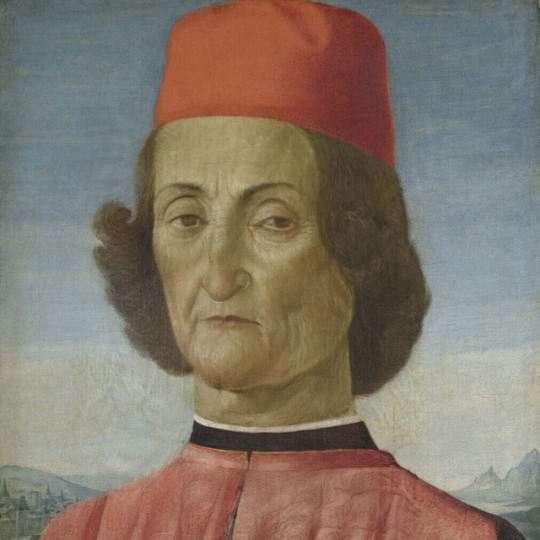
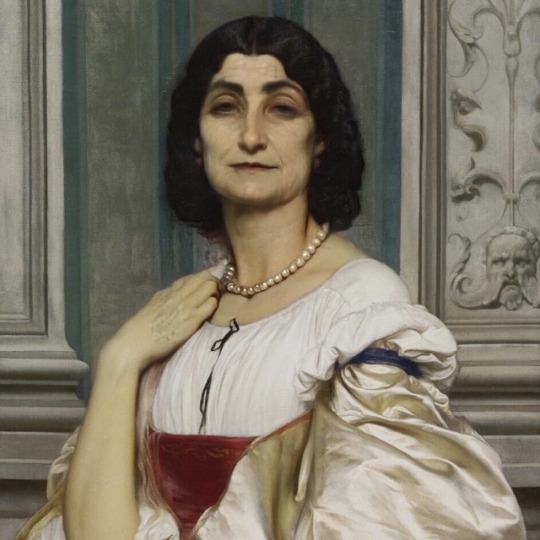

We knew these paintings were old, but this is ridiculous.
"Portrait of the Countess of Tournon," 1812, by Jean-Auguste-Dominique Ingres
"Portrait of a Young Man, possibly Giuliano de' Medici," 1465–70, by Sandro Botticelli
"Portrait of a Roman Lady (La Nanna)," 1859, by Sir Frederic Leighton
"Le Bon Bock," 1873, by Édouard Manet
#old age challenge#face app#age filter#art#art museum#museum#art history#history#portrait#Philadelphia Museum of Art#philadelphia art museum#Philadelphia#Philly museum of art#Philly art museum#Philly#Le Bon Bock#Manet
109 notes
·
View notes
Photo
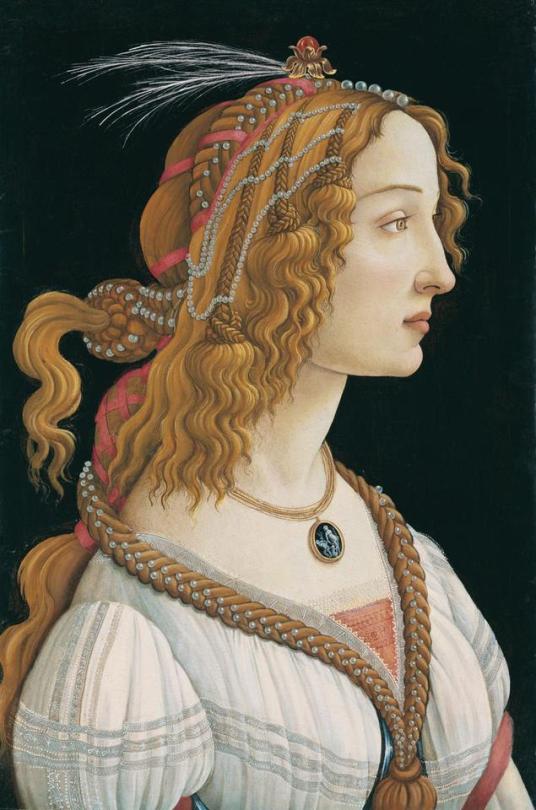

Portraits of Simonetta Vespucci by Sandro Botticelli
Left: Idealized Portrait of a Lady (1475)
Right: Portrait of a Young Woman (1480)
sources:
Left: http://www.staedelmuseum.de/en/collection/idealized-portrait-lady-portrait-simonetta-vespucci-nymph-ca-1475
Right: https://www.wikiart.org/en/sandro-botticelli/portrait-of-a-young-woman
#sandro botticelli#Simonetta Vespucci#Idealized Portrait of a Lady#Portrait of a Young Woman#painting#art
4 notes
·
View notes
Photo

Portrait of Simonetta Vespucci as Nymph | Sandro Botticelli | 1480 | Städel, Frankfurt
“The fantastical accoutrements in this larger-than-life-size half-length painting of a young lady make it clear that it is not a likeness in the strict sense, but an ideal portrait in the mythological guise of a nymph. Shown in profile, the young woman displays the features of Simonetta Vespucci, the prematurely deceased mistress of Giuliano de’ Medici. The pendant on her necklace also places her in the immediate circle of the Medici, imitating a famous ancient cameo which was in that family’s collection.”
86 notes
·
View notes
Photo

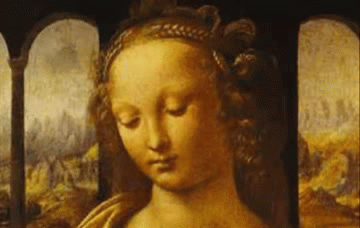

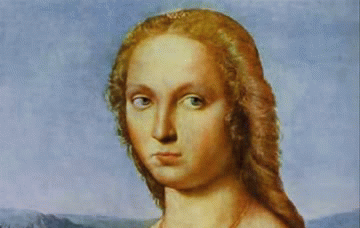




Women in Western Art
Leonardo Da Vinci, Head Of A Young Woman With Tousled Hair / Leda, circa 1508, National Gallery, Parma
Leonardo Da Vinci, The Madonna of the Carnation, 1478–1480, Alte Pinakothek, Munich
Leonardo Da Vinci, Mona Lisa, circa 1503–06, Musée du Louvre, Paris
Raphael, Young Woman with Unicorn, 1506, Galleria Borghese, Rome
Sandro Botticelli, The Birth of Venus, circa 1486, Uffizi, Florence
Titian, Portrait of a Young Woman, circa 1536, Hermitage museum, St Petersburg
Giovanni Antonio Boltraffio, Portrait Of A Lady As Saint Lucy, circa 1509, Museo Nacional Thyssen-Bornemisza, Madrid
Giovanni Bellini, Sacred Conversation, 1490
Titian, Profane Love, circa 1515, Alte Pinakothek, Munich
Original video by Philip Scott Johnson
Gifs by Historyofartdaily
#art history#history of art#art gif#women in art#history#renaissance#renaissance art#Leonardo Da Vinci#Raphael#da vinci#botticelli#Sandro Botticelli#titian#Giovanni Antonio Boltraffio#Giovanni Bellini#bellini
4K notes
·
View notes
Text
Art History Meets Fashion at the 2018 Met Gala

Art history, but make it fashion.
Is the Met better known for its art collection or for its luxurious annual gala? Yesterday our favorite (and not-so-favorite) celebrities appeared at the 2018 Met Gala for “Heavenly Bodies: Fashion and the Catholic Imagination.” The theme was one of the event’s most controversial yet, and a large number of people didn’t dress accordingly (why anybody would willingly not follow a Met Gala theme is beyond me) while others showed up in outfits featuring bedazzled crosses and halos. A few others went above and beyond to incorporate art into their outfits. Here are some of our favorite parallels to art history in this year’s Met Gala costumes.
In the most obvious nod to art history, pop singer Ariana Grande displayed the “back wall of the Sistine Chapel” in her gown designed by Vera Wang.
The Last Judgment, Michelangelo, 1536-1541
It doesn't get much more Roman Catholic than this! The painting that graces Ariana Grande's dress also graces the back wall of the Sistine Chapel, a building at the very heart of Roman Catholicism. The chapel is part of the apostolic palace, AKA the Pope's very own house, and is used for ceremonies such as the Papal Conclave, when a new pope is selected. Michelangelo completed this wall in 1541, some time after he finished the ceiling, and it depicts the final judgment of man in a tumultuous swirl of motion and rippling muscles. The placement of this scene on the East Wall rather than the West wall, where such scenes were typically painted to remind visitors of the coming judgment as they left, was an interesting choice; the only person who went in and out of the door on the East side in the right corner was the pope, which placed the pope's entrance directly inside Hell! (Did Michelangelo have some beef with the pope, or what?) And speaking of interesting placement, check out where Jesus is on Ariana Grande's dress! Not where you usually find Jesus, to say the least. (Though maybe one could say he is directly over her heart, which makes it a little better.)
As always, Rihanna stole the show with her expensive pope get-up by John Galliano. Her papal tiara looks incredibly similar to one on this mosaic of Pope Clement VIII by Jacopo Ligozzi.
Rihanna's filet-shaped hat is a super-glam version of the Mitre, a type of papal hat worn since at least the tenth century after a long evolution from the Roman camelaucum. There are several kinds of mitre, each worn on designated occasions and differing from each other in level of ornamentation, from the heavily ornamented mitre pretiosa to the mitre simplex, the most plain. Rihanna's hat is a little more pretiosa than simplex. The only people officially allowed to wear mitres are Popes, cardinals, and bishops. Ri-Ri over here probably didn't get a special dispensation from the Pope to wear that headgear, but since she was one of the overseers of the entire Met Gala this year we'll let it slide.
Triumph of Religion, John Singer Sargent, 1916
A number of the outfits were heavily inspired by a popular type of Marian imagery called “Our Lady of Sorrows,” which is a religious devotion including specific prayers and meditations relating to seven episodes from the Virgin's life that caused her great sorrow. The standard depiction of Our Lady of Sorrows includes a golden halo or crown, prominent tears, and seven swords piercing her heart.

Lana del Ray in Gucci

Lily Collins in Givenchy Haute Couture

SZA in Versace
(we know who really inspired the resurgence of the halo crown though)
Halo crowns weren’t the only type of headwear at the Met Gala, but they certainly did make a splash. The halo, depicted as a disc or small circular nimbus, was used in Classical Rome in the depiction of certain gods and emperors, and while early Christians tried to resist incorporating the halo into their imagery because of its Pagan origins, the Halo was too powerful an attribute to make disappear. I mean, what else could be so effective at representing holiness than this symbolic use of light? By the sixth century CE, the halo was standard in depictions of all the most important saints and angels, and even Jesus. While Michelangelo eschewed halos for his more earthly looking saints, the halo made a big comeback during the Counter Reformation, during which time the Church was using art to reinforce its own majesty and glory.
Consider these art-inspired headpieces for your next music festival outfit.

Rita Ora in Prada and Lorraine Schwartz
Ghent Altarpiece, Jan Van Eyck, 1432

Janelle Monae in Jennifer Fisher
Madonna Enthroned, Giotto, 1306
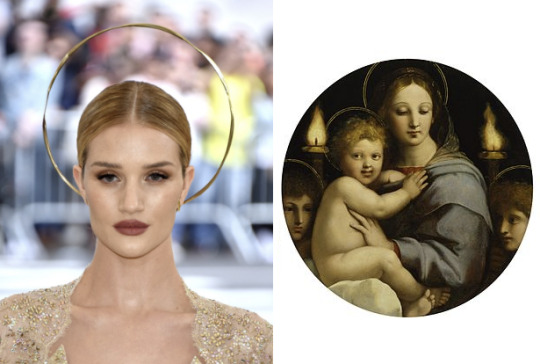
Rosie Huntington-Whiteley in Ralph Lauren and Anita Ko
Madonna of the Candelabra, Raphael, 1513
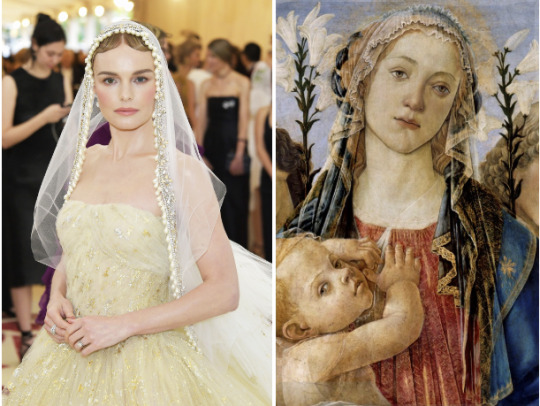
Kate Bosworth in Oscar de la Renta and Tacori
Mary with the Child and Singing Angels, Sandro Botticelli, 1477
With her golden hair parted chastely down the center of her head and covered with a transparent, fringed veil, Bosworth looks the very image of a Botticelli Madonna. While Mary is typically shown in a blue mantle over a red garment, Botticelli also liked to show off his skills by painting transparent silk. Her head covering is representative of her virginity, which according to Catholic dogma, she retained her entire life, despite her marriage to Joseph. The virginity question aside, Kate Bosworth shares the Madonna's beauty and regal bearing.
Sarah Jessica Parker in Dolce & Gabbana and Jennifer Fisher
The Adoration of the Magi, Giovanni di Paolo, 1460
Sarah Jessica Parker seems to live by the motto “Go Big or Go Home.” The ornate quality of her headdress is reminiscent of many late gothic reliquaries, which were often covered in gilding, encrusted with jewels, and decorated with little figures, including Nativity scenes. The red heart that tops her church of a hat may also be a reference to the Sacred Heart, a common symbol in Catholic devotion that refers to Christ’s divine love of mankind as the reason for his sacrifice.
If crowns aren’t your thing, don’t worry- the Met Gala’s got you (mostly) covered when it comes to clothes. These outfits were not only dazzling but also took inspiration from major period artists! What more could you want?
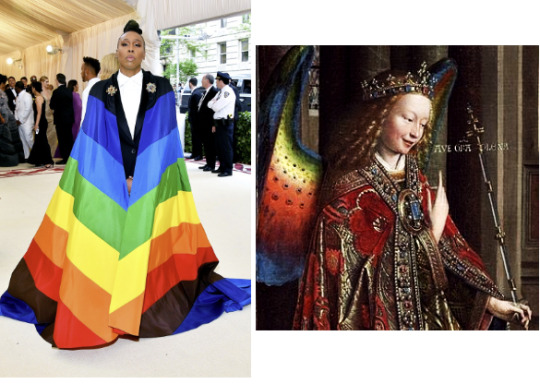
Lena Waithe in Carolina Herrera
The Annunciation, Jan Van Eyck, 1436
The rainbow is a powerful symbol in Christian art, denoting God's promise to never again wipe out all of humankind in a devastating flood. The insanely gorgeous rainbow wings Van Eyck gives the Angel Gabriel in this Annunciation scene may refer to that promise of old while also enforcing the idea of a new covenant God would create with man in the birth, death, and resurrection of His son. Since then, the rainbow flag has been adopted as a symbol of Gay Pride, reflecting the diversity of the LGBTQ community. And who said you can’t have pride and be religious at the same time? Certainly not the Bible.
Emma Stone in Louis Vuitton
Mariana, John Everett Millais, 1851, Tate Britain
Millais isn’t exactly Catholic art, but the stained glass windows in his painting sure are. The painting depicts Mariana from Shakespeare's "Measure for Measure," a play that takes place in Catholic Italy and grapples with Roman Catholic themes such as chastity, piety, corruption, lust, hypocrisy, and repentance. Mariana waited patiently and chastely for her ex-fiance Angelo after he dumped her when she lost her dowry in a shipwreck, only to take part in a crazy bed-swapping trick to lure Angelo into marrying her. Whether or not Mariana is a good Catholic role model is debatable, but that dress is clearly inspired.
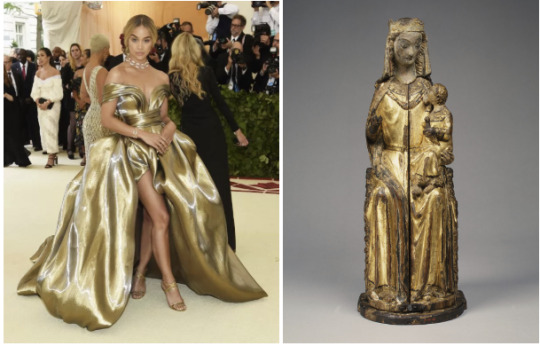
Jasmine Sanders in H&M
Shrine of the Virgin, anonymous, 1300, Metropolitan Museum of Art
If this dress wasn’t inspired by this piece, there’s still an uncanny resemblance between the two--the slit in the dress is in the exact same spot as the opening for the shrine. The volume of the dress and its golden color also reflect the Marian imagery found on many shrines, including this one from Medieval Germany that was gilded on wood and opens to reveal a mystical image of the Trinity. What mystical treasures this dress conceals are for Jasmine to hide or reveal as she pleases.

Misha Nonoo
Infanta Isabella Clara Eugenia, Sofonisba Anguissola, 1599
We can only hope this dress isn’t as uncomfortable as it looks--for both of them. You have to give her credit for going the Renaissance Noble route, celebrating the fancy Patrons who would have commissioned all the fabulous art. Sofonisba Anguissola was a rare female artist who actually worked at the Spanish Court in the reign of Philip II, during Catholic Spain's fight for dominion over the Low Countries. Anguissola was able to render her royal sitters and their fabulous clothing and jewelry delicately and soberly. Misha Nonoo, denizen of the London Fashion world and matchmaker to Prince Harry and Megan Markle, takes that classic little-black-number-and-white-ruff Spanish court look, and gives it a contemporary, more subtle edge. The Infanta Isabella Clara Eugenia probably wouldn't have been able to get away with a sheer midriff, but it's a perfect update for 2018.

Christian Combs in Dolce & Gabbana
Portrait of Jacob Boncompagni, Scipione Pulzone, 1574
If you’re ever wondering what P. Diddy is up to these days, he’s apparently taking his son to the Met Gala. Young Christian "King" Combs is no stranger to the catwalk, and he can pull off pretty much anything. That gold embroidery on black, studded jewels, and velvet crown hearken to the most fancy armor seen in 16th century portraits, making Combs look positively kingly. Such armor, while great for getting your picture painted in, would have been far too costly to wear out and about or, God forbid, in combat. "This is just my fancy dress armor," Jacob Boncompagni would have said. "I only bust it out for things like the Met Gala."

Zendaya in Atelier Versace and Tiffany & Co. jewelry
Jeanne d’Arc, Albert Lynch, 1903
Roman Catholic attire can't be summed up by silly hats, robes, and jewels alone. There's also a little something called "crusader chic," and it is full-on medieval. While Joan of Arc was no crusader, she is now one of nine secondary patron saints of France due to the prominent role she played in the Hundred Years' War. When just a girl, the peasant Joan received visions of various saints telling her to support Charles VII and help free France from English rule. She attended the military campaigns wearing protective armor, but after several French victories, she was captured by a Burgundian faction working for the English and burned at the stake. Now canonized by the Roman Catholic Church as a martyred saint, Joan of Arc continues to inspire, as can be seen in Zendaya's surprisingly sultry, but very heavy-looking chain mail outfit. Somebody just give her a sword already!
Katy Perry in Versace
Angel, Abbott Handerson Thayer, 1887, Smithsonian American Art Museum
Katy Perry looks ready to take flight any minute now. And that's because she did the right thing and went all out for her gala outfit! Despite the fact that the word "angel" comes from the Greek word for Messenger, and there is no standard description of their appearance in the Bible, Thayer's painting largely sums up the popular conception of angels: virginal, dressed in flowing white robes, and with wings, of course! There's no halo here, however, and that may be because the model for this was actually Thayer's own 11-year-old daughter, and he was trying to depict her as the personification of spiritual beauty, not specifically an angel, despite the painting's title. Thayer himself thought art was "a no-man’s land of immortal beauty where every step leads to God." And that's pretty much the same plane where traditional Roman Catholicism places Angels, majestic beings close to God.
Emilia Clarke in Dolce & Gabbana Alta Moda
The Triumph of Galatea (detail), Raphael, 1514
The Mother of Dragons always slays, no matter what she's wearing. With its elaborate, curvilinear gold embroidery and frolicking putti, this dress looks like it came straight out of the Rococo. While Putti were originally found on Classical Pagan sarcophagi, the motif was revived during the Renaissance in Italy, where it was utilized in paintings of classical myth, and was adopted into Christian Iconography. What was once a little cupid underwent a conversion experience into an angel (along the lines of a cherub). In the Rococo, Putti also became symbols of leisure and playfulness, which is why Putti often scream of wealth and excess. Dolce and Gabana clearly know that, like leopard print, putti are most tasteful in small doses.

Stella Maxwell in Moschino and David Yurman

“Tenderness” icon of the Mother of God, 1521
Wow. Where do we even begin talking about this beautiful dress? This mosaic-styled gown features various images of Mary that you’ll only be able to find in churches and on prayer candles. Indeed most, but not all, appear to be inspired by Byzantine icons of the Madonna. While most strongly associated with the Eastern Orthodox Christian tradition, such radiant and opulent images could be found in pre-Renaissance (and therefore Catholic) art in Western Europe as well. Images like this were meant to be venerated as conduits to saint Mary herself, who could then intercede for you. "Our Lady of Tenderness" is one such icon that was depicted, either with the Christ child in her arms, or with her hands over her chest in that heart-felt position.
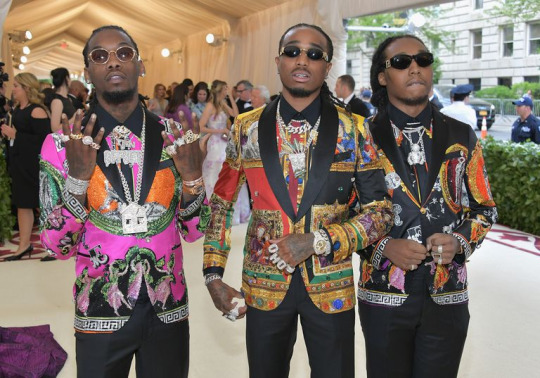
Migos in Versace
There’s too many references in these matching sequin outfits to count! One jacket is covered in solely Christian images while the other two primarily feature classical Greek and Roman artworks. We were able to spot the Venus de Milo, The Victorious Youth, and several variations of Madonna and Child currently exhibited by the Met (shown below).
Madonna and Child, Duccio di Buoninsegna, 1290
Madonna and Child, Berlinghiero, 1230
Madonna and Child, Giovanni Bellini, 1480

Salma Hayek in custom Altuzarra

Garden of Eden with the Fall of Man, Peter Paul Rubens and Jan Brueghel the Elder, 1617, Mauritshuis
The branch of parrots and white horse trotting in the background scream this classic Brueghel/Rubens collab, even if Adam and Eve are nowhere in sight. The Garden of Eden and the Fall of Man that took place therein are central to Roman Catholic dogma, so this makes a fabulous choice of subject for the evening. Jan Brueghel the Elder and Rubens were both Catholic and their artwork shows the influence of the Counter-Reformation, during which the celebration and cataloging of natural phenomena (such as flora and fauna) was used as a way to understand the divine revelation of God. Nature was how God revealed himself to man, so observing it carefully was good for one's spiritual health. But don't forget, this is the 17th century. Don't get too scientific now--stay outta here with your gravity and Capernican Heliocentrism. You can keep that nice, zoological dress, though.
With so many options for themes, ranging from Roman Catholic dogma, to Bible stories, to priestly vestments, to works in museums and churches, and the patrons who commissioned them, this sure has been a fruitful year for fashion creations. Kudos to all those designers out there getting really funky with it, sacrilege be damned.
Today’s lesson: if you’re heading to a museum to look at art, the best outfit to wear is art itself. Let us know what your favorite Met Gala looks were this year!
By Alannah Clark and Jeannette Sturman
#met gala 2018#met gala#metropolitan museum of art#art history#fashion#italian renaissance#catholicism#religion#blasphemy#rihanna#high fashion#virgin mary#art news#michelangelo#raphael#jesus#history of art#haute couture
3 notes
·
View notes
Text

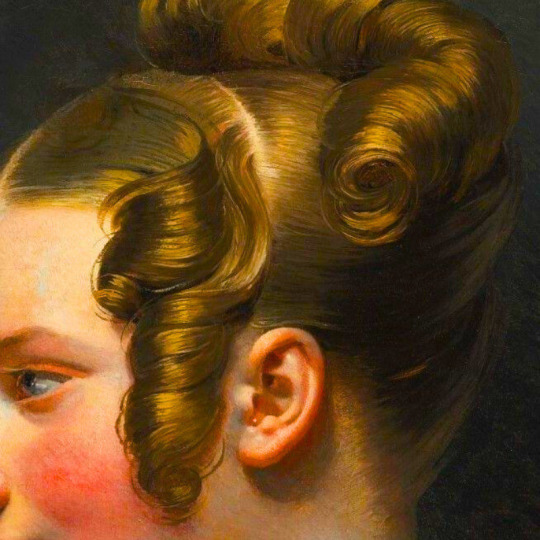

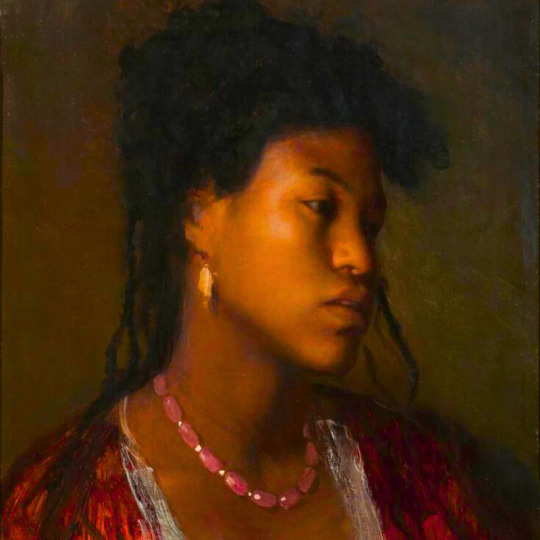

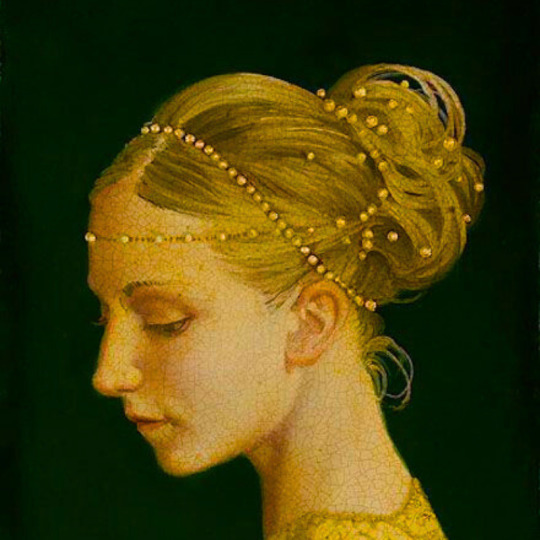
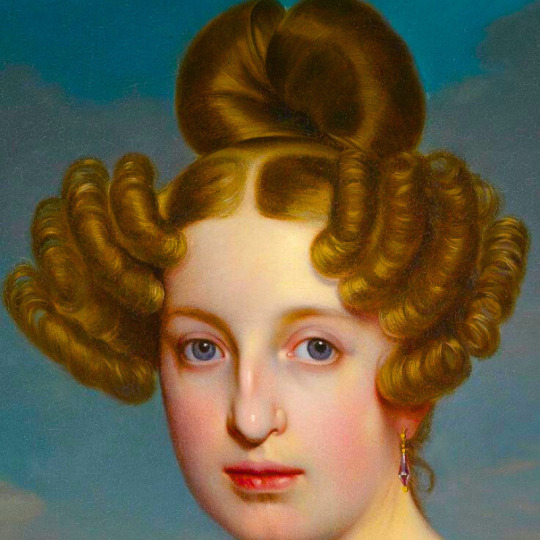
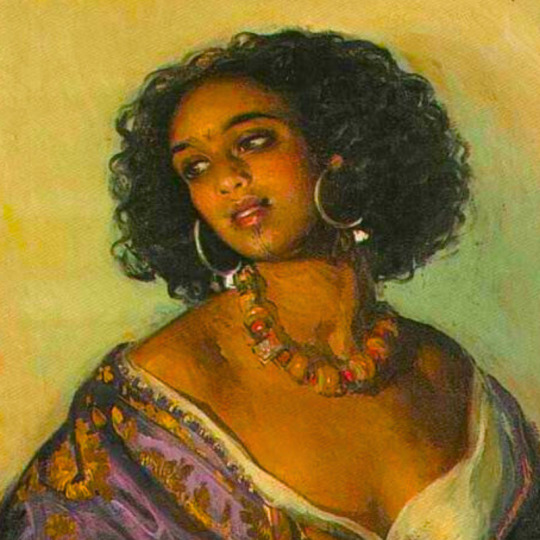


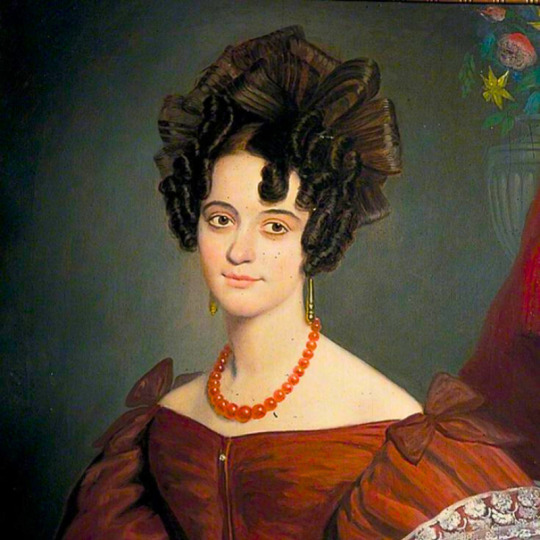
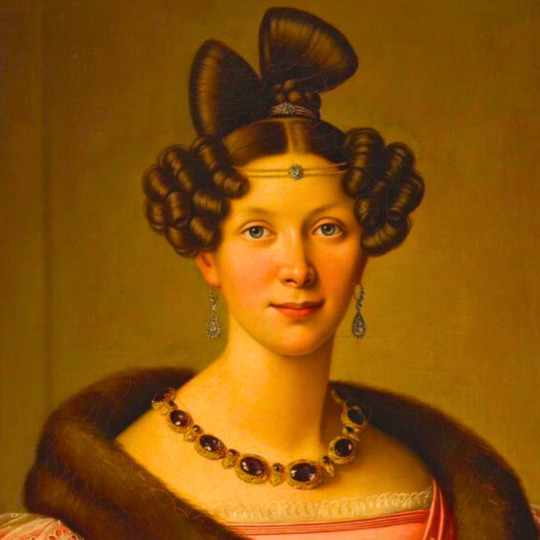
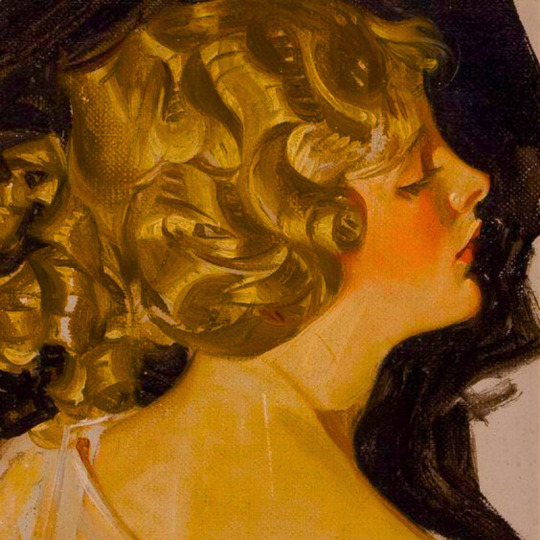
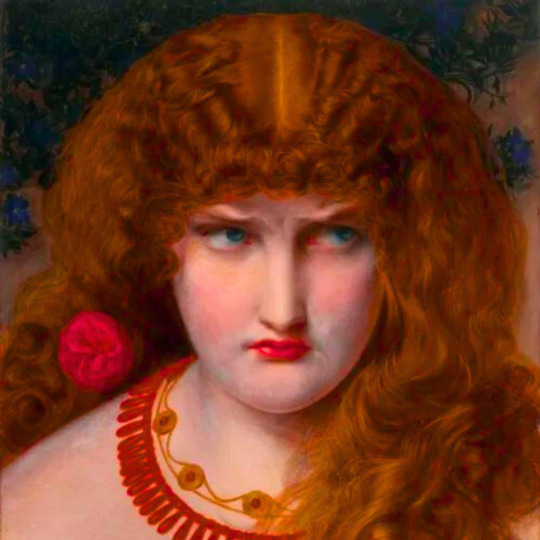
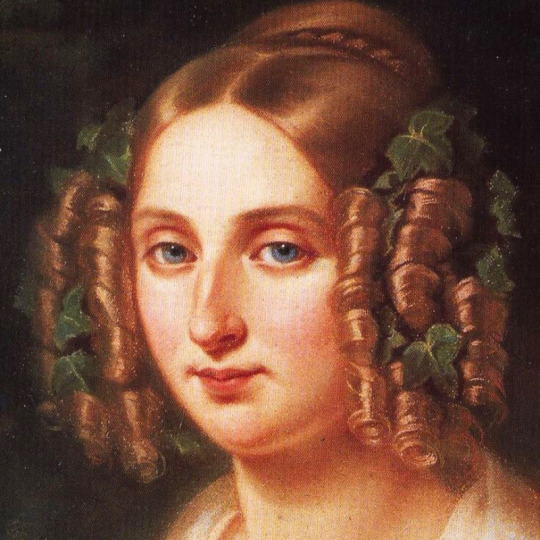
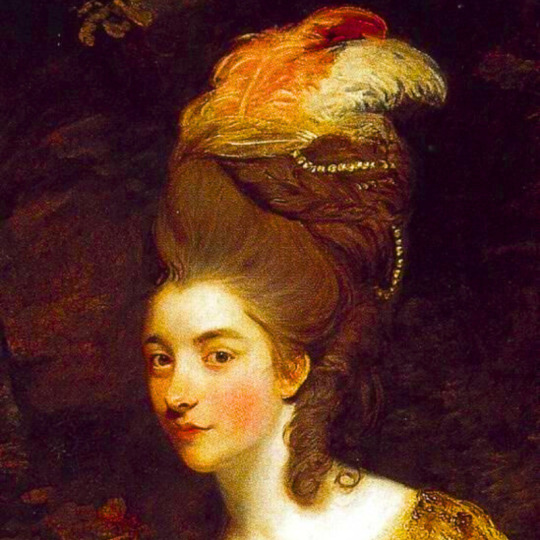
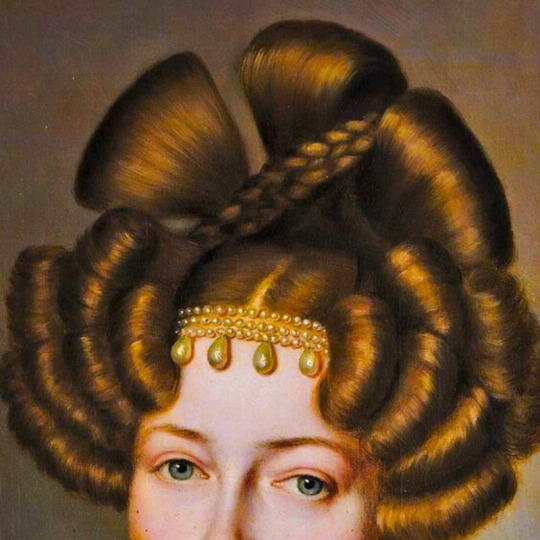


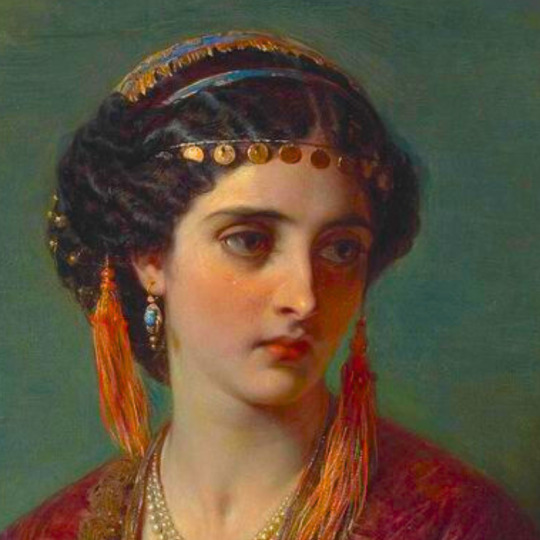
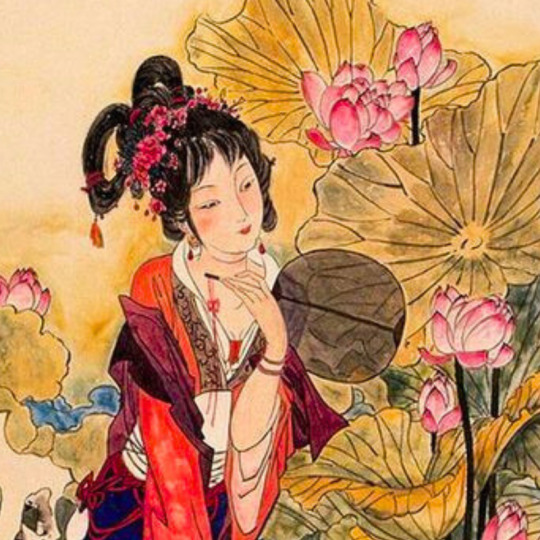
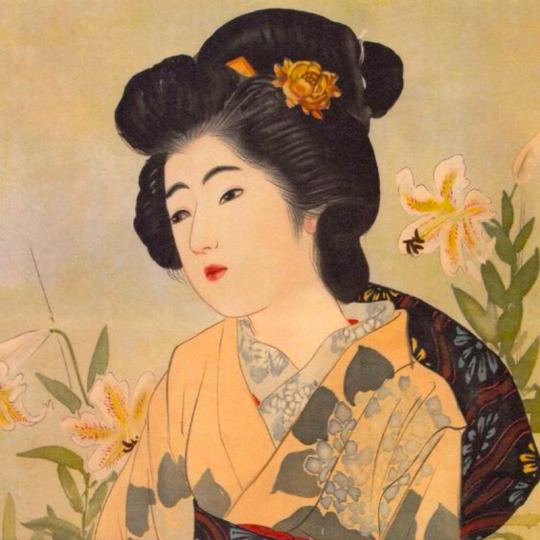
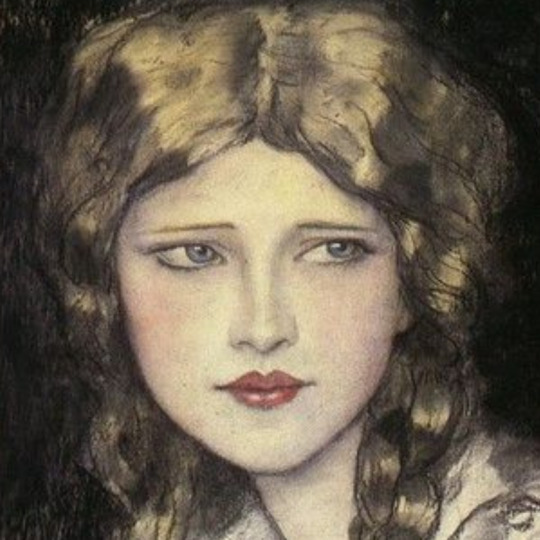

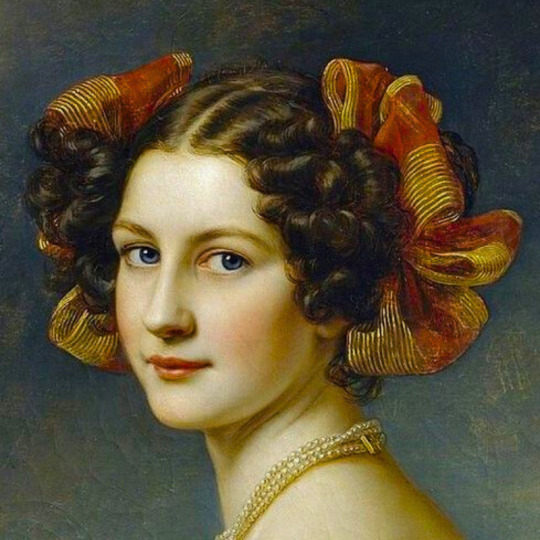

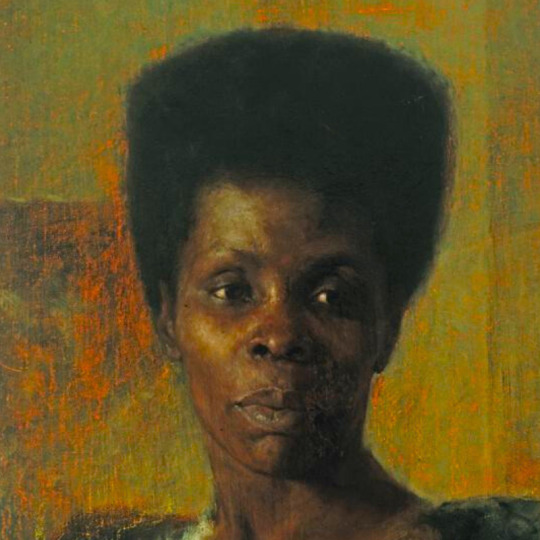
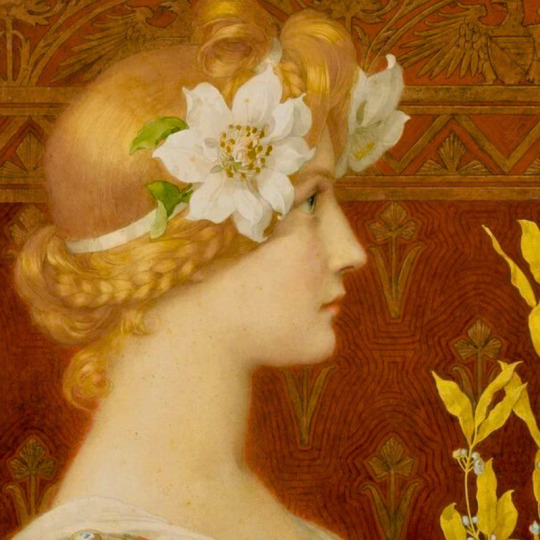
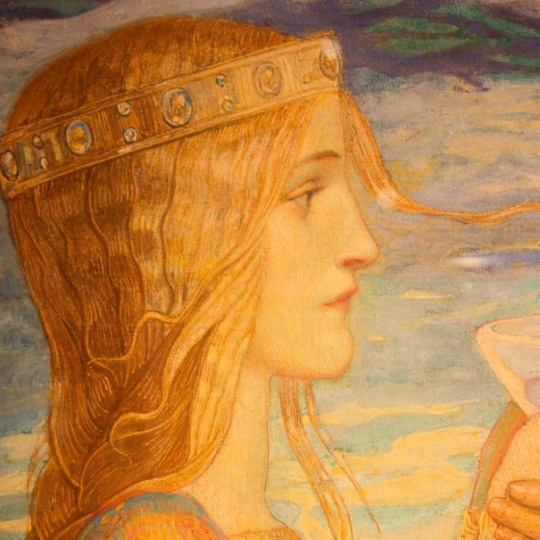
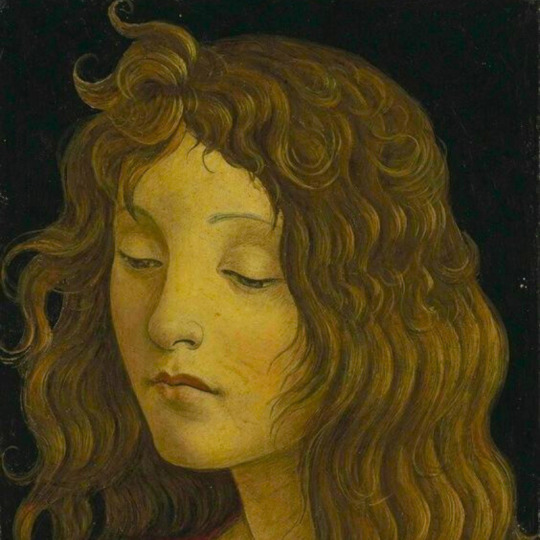
hair + art
#hortense mancini by jacob ferninad voet#painting is by edouard louis dubfe#painting by joseph karl stieler#painting by leopold carl muller#venus and mars by sandro botticelli#betrothed by james christensen#elise dorothea frederike by ernst thelott#painting by jose cruz herrera#miss jane mercer by samuel bell waugh#painting by johann heinrich richter#sarah walker of canterbury by j.b. haslehurst#painting by friedrich wilhelm herdt#young woman by j.c. leyendecker#helen of troy by anthony frederick augustus sandys#marie louise of orleans by i cant find the artist#georgiana duchess of devonshire by sir joshua reynolds#maria cornelia van wassenaer by jean baptiste van der hulst#portrait of a lady by franz schrotzberg#countess claudine rhedey johan nepomuk ender#painting by thomas francis dicksee jessica#escaping summer heat by hua sanchuan#i think this is by eiho hirezaki#drawing by wladyslaw t. benda#painting by hugette clark#auguste hilber by joseph karl stieler#empress elisabeth of austria by franz xaver winterhalter#zamorka by anton azbe#painting by elisabeth sonrel#painting by john duncan#saint john the baptist by sandro botticelli
280 notes
·
View notes
Text
Keindahan Ilahi

Dengan berjudul ‘Keindahan Ilahi’, saya ingin membahas relasi Sandro Botticelli terhadap Dante Alighieri baik dari karya dan rasa.
Alessandro di Mariano di Vanni Filipepi atau yang biasa kita kenal sebagai Sandro Botticelli merupakan salah satu pelukis tersohor pada masa Early Renaissance di Italia, lebih tepatnya Florence. Di bawah naungan Filippo Lippi, Botticelli meraih pembelajaran mengenai dasar pada melukis hingga ia dapat mengadakan workshopnya sendiri. Seperti yang kita tahu, karya-karya Botticelli tidak lepas dari penggambaran mitologi pada puncak karirnya. The Birth of Venus, The Spring, dan Venus and Mars merupakan karya yang membuat namanya melambung hingga terkenal dan dikenang sampai saat ini.
Jika Bottecelli seorang pelukis, Dante Alighieri adalah penyair dari Italia pada masa Late Middle Ages dengan karyanya, The Divine Comedy, dalam bentuk trilogi Inferno, Purgatorio, dan Paradiso. Salah satu karya yang dianggap paling penting dan berpengaruh untuk perkembangan dunia literasi yang ditulis dalam bahasa Italia.
Karya-karya dari Botticelli dan Dante didasari pada idealisasi terhadap suatu keindahan, dan salah satunya adalah wanita.

Simonetta Vespucci (Sumber foto: google).
Simonetta Vespucci adalah ‘kembang’ dari Genoa, Italia yang terkenal akan kecantikannya sehingga dikenal sebagai la bella Simonetta. Pelukis seperti Sandro Botticelli dan Piero di Cosimo, juga Guiliano de’ Medici, keluarga berpengaruh di Florence pun terpesona akan kecantikan Simonetta.
Pada masanya, dianggap tabu jikalau wanita yang sudah menikah menjadi model untuk dilukis secara telanjang. Sehingga, Botticelli hanya mengaguminya dari jauh dan melukiskannya di panel maupun kanvas. Sosok Simonetta melekat pada lukisan Botticelli seperti
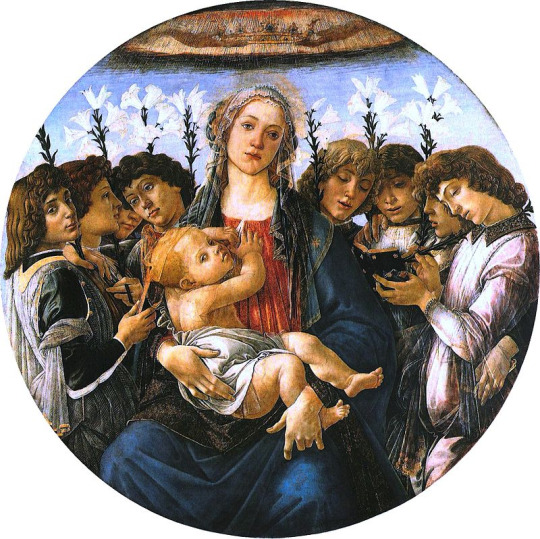
Madonna and Child with Eight Angels

Venus and Mars
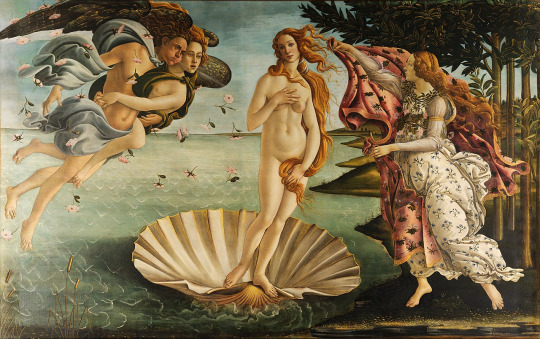
The Birth of Venus

The Spring (Primavera)

Portrait of a Young Woman
Dan masih banyak lukisan lain yang merefrensikan Simonetta Vespucci sebagai tokoh dan inti dari karya Sandro Botticelli. Rasa kasih dan obsesi Sandro Botticelli terhadap Simonetta Vespucci berlangsung hingga ia meminta Keluarga Medici untuk menguburnya di bawah kaki Simonetta pada Gereja Chiesa di San Salvatore in Ognissanti, Florence, Italia.
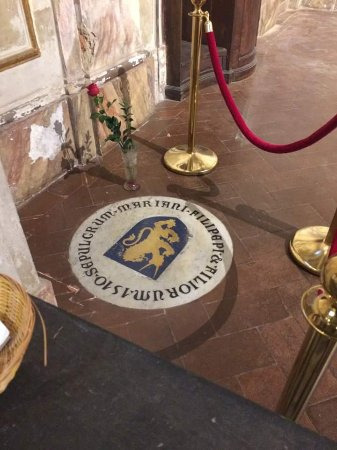
Tomba di Sandro Botticelli, Chiesa di San Salvatore in Ognissanti.
Selain Simonetta Vespucii, adanya sosok wanita ini juga berpengaruh untuk karya Dante Alighieri, yaitu Beatrice Portinari.
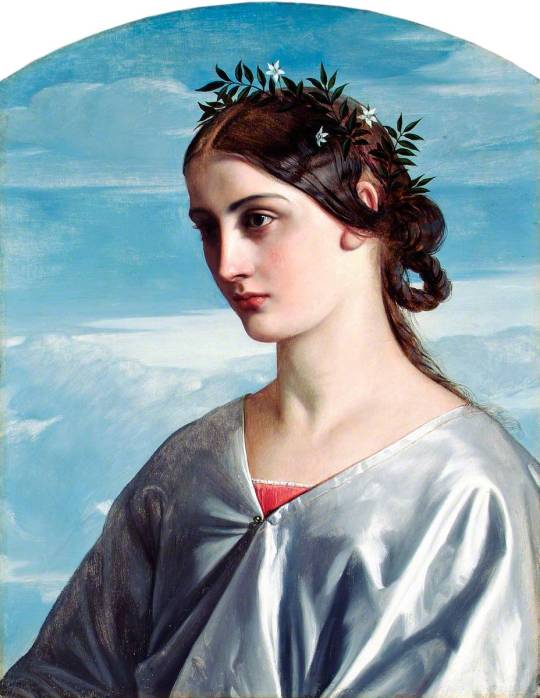
Beatrice Portinari (Sumber: google).
Beatrice dan Dante hanya bertemu 2 kali seumur hidup. Yang pertama di pesta Mei (May Day) di rumah keluarga Portinari saat Dante dan Beatrice masih berumur 9 tahun, dan yang kedua di jalan Florence seperti yang ditulis Dante di karya autobiografinya, La Vita Nuova. Beatrice pun menikah dengan pria lain saat Dante juga menikah dalam perjodohan.

Ilustrasi pertemuan Dante dan Beatrice di jalan Florence ( Dante and Beatrice, by Henry Holiday, Sumber: google)
Sayangnya, kedua wanita ini kurang beruntung. Mereka meninggal di usia yang terbilang masih muda. Simonetta Vespucci meninggal pada umur 22 tahun karena tuberkolosis yang dideritanya. Sedang Beatrice Portinari meninggal pada umur 25 dengan penyebab yang belum diketahui.
Ketidakhadiran fisik tidak membuat Sandro Botticelli dan Dante Alighieri melupakan yang mereka kagumi dan kasihi. Mereka memberi Simonetta dan Beatrice tempat di sebuah karya sebagai sosok yang penting dan ilahi. Sebagaimana Botticelli menggambarkan Simonetta sebagai sebuah sosok ideal akan keindahan, seperti di imej Venus/Aphrodite yang mana adalah dewi cinta, kecantikan, seksualitas, kenikmatan, dan prokreasi dalam mitologi Yunani, dan imej The Virgin Mary, Mother of Jesus sebagai sosok Ilahi dan suci. Penggambaran Botticeli terhadap Simonetta sangatlah berbanding terbalik, dari Venus ke Maria, seksualitas ke suci. Walau memiliki latar belakang yang berbeda, Venus dan Maria sama-sama sosok yang ilahi, dimana memegang peran penting terhadap suatu peristiwa, dan diagungkan.
Tidak jauh berbeda dari Botticelli, Dante menggambarkan imej Beatrice sebagai sosok ‘pendamping’ yang ilahi. Seperti halnya Dante menuliskan kehadiran Beatrice di karya The Divine Comedy, pada empat canto terakhir dari Purgatorio dan menjadi pendamping Dante sepenuhnya di Paradiso. Dante menggambarkan Beatrice khalayak wanita bercahaya dari langit, atau bahkan seorang malaikat pendamping dalam hidupnya.
“Love, that moves the sun and the other stars”
― Dante Alighieri, Paradiso
“My lady looks so gentle and so pure When yielding salutation by the way, That the tongue trembles and has nought to say, And the eyes, which fain would see, may not endure. And still, amid the praise she hears secure, She walks with humbleness for her array; Seeming a creature sent from Heaven to stay On earth, and show a miracle made sure. She is so pleasant in the eyes of men That through the sight the inmost heart doth gain A sweetness which needs proof to know it by: And from between her lips there seems to move A soothing essence that is full of love, Saying for ever to the spirit, “Sigh!”
― Dante Alighieri, La Vita Nuova
“Lady, you who are so great, so powerful,
that who seeks grace without recourse to you
would have his wish fly upward without wings.”
― Dante Alighieri, Paradiso
Quello infinito e ineffabil bene
che là sù è, così corre ad amore
com’ a lucido corpo raggio vene.
translasi
That Good, ineffable and infinite,
which is above, directs Itself toward love
as light directs itself to polished bodies.
― Dante Alighieri, Purgatorio (Canto XV)
Rasa dan kekaguman dari Dante Alighieri terhadap Beatrice tentu menjadi inspirasi bagi Botticelli terhadap karya-karyanya. Disamping itu, Sandro Botticelli pernah mengilustrasikan The Divine Comedy yang dikomisi oleh Lorenzo di Pierfrancesco de' Medici dari keluarga berpengaruh di Florence, Keluarga Medici.



Ilustrasi Paradiso oleh Sandro Botticelli di Kupferstichkabinett, Staatliche Museen zu Berlin.
Dengan adanya keterkaitan relasi rasa dan inspirasi, Sandro Botticelli dan Dante Alighieri mengenang orang yang mereka kasihi, kagumi, dan sayangi melalui kekekalan karya dan rasa, tentunya atas dasar Keindahan Ilahi.
1 note
·
View note
Text
#FineArtFriday: Portrait of a Lady by the workshop of Sandro Botticelli ca. 1480
#FineArtFriday: Portrait of a Lady by the workshop of Sandro Botticelli ca. 1480

Artist: Workshop of Sandro Botticelli (1445–1510)
Title: Idealized Portrait of a Lady (Portrait of Simonetta Vespucci as Nymph)
Genre: portrait
Date: circa 1480
Medium: tempera on wood
Dimensions: Height: 82 cm (32.2 ″); Width: 54 cm (21.2 ″)
About Portrait of a young woman, possibly Simonetta Vespucci, 1484:
The Roman engraved gem on her necklace was owned by Lorenzo de’ Medici. It is suggested…
View On WordPress
0 notes
Text
We’ve offered many fun quizes, which you can read on our Outlander page here, but sometimes we like to challenge you. We tripped a few of you up in our Ultimate Outlander Book Quiz, here, so let’s see how you do with quiz that tests your knowledge on Dragonfly in Amber! This quiz doesn’t have any spoilers for the show, but if you want to read the book, then be careful!
Who painted all the royal portraits in the Great Gallery?
Frances Cotes
Jacob DeWitt
Charles Brooking
Samuel Scott
2.What did Reverend Wakefield do every night before bed?
Wrote in his journal
Read part of Frank Randall’s history books
Sang ‘The Skye Boat Song’ to Roger
Had a glass of sherry and listened to the radio
3. How did Claire keep her teeth clean so clean?
She used toothpaste she made herself from cloves and mint
She chewed “gum” made from Spruce resin
She washed her mouth out with whiskey to kill bacteria
She brushed them with the twig from a willow tree
4. What did Prince Charles always carry with him?
A letter from his father, reminding him he is king
A miniature portrait of Louise
A cross that belonged to his mother
A stone taken from the cairn of a great Scottish king
5. What nickname does Young Simon say Claire is known by?
The White Witch
Lady Long Legs
Sassanach Sorceress
Mistress Honeylips
6. What famous artist’s work did Claire say the wise woman Mairsi resemble?
Sandro Botticelli
Amedeo Modigliani
Johannes Vermeer
Francisco Goya
7. What was the main ingredient in Monsieyr Forez’s salve?
Hanged-men’s grease
The blood of a virgin
Powdered human skull
A guillotined woman’s tears
8. What jeweled thing was hanging from Madame Nesle de la Tourelle’s pierced nipples?
Colorful peacocks
Golden mermaids
Graceful swans
Pale Roses
9. What relative did Uncle Jared most resemble?
Dougal
Murtagh
Cullom
Jamie’s father, Brian
10. What was the necklace that Jamie gave Claire made of when they went back to Scotland?
Amber
Cotter Pins
Carved stones from a French cave
The links of chain from a British wagon
11. What street was Master Raymond’s shop on and what animal did Claire think he resembled?
Rue de Sein and a gorilla
Rue de Rivoli and a lizard
Rue de Varennes and a toad
Rue de Richelieu and a bull dog
12. What is the last verbal phrase spoken at the end of the book?
“He meant to die on Culloden Field…But he didn’t.”
“I have to go back.”
“Jamie escaped…he’s alive.”
“Help me find him. Help me find your father.”
13. What instrument does Mother Hildegarde play?
The harpsichord
The clavichord
The fortepiano
The virginal
14. What animal does Jamie think he resembles at times?
An orangutang
A fox
A hedgehog
A tiger
15. What occupation did Jamie say he wanted to be when he was a child?
A blacksmith
A politician
A pirate
A horse breeder
16. What saint did Claire think of before her meeting with the king?
Saint Nicholas, the savior of prostitutes
Saint Anthony, the patron saint of Scotland
Saint Joan of Arc, the warrior woman saint
Saint Mary Magdalene, the fallen follower of Jesus
17. What did Jamie give Claire as a belated gift for their first wedding anniversary?
Hair ribbons
A dapple grey pony
A piece of amber
His mother’s crucifix
18. Which Cameron lead 300 clansmen to join Prince Charlie?
Jenny Cameron
Jacob Cameron
Janet Cameron
James Cameron
19. Murtagh wasn’t pure Scottish. What country did his grandmother hail from?
England
Germany
Ireland
Spain
20. What did Claire do with the money gotten from the sale of her pearl necklace?
Se bought blankets for some men imprisoned in Tolbooth
She purchased medicinal herbs to help Alex Randall
She sent it to Jenny to help her feed Jamie’s tenants
She sent it to Jared for safekeeping
21. BONUS: How did you react to Claire retuning to Frank and her previous life?
Ugly sobs à la Kim Kardashian
A moment of careful contemplation in which you reevaluated your entire life
You ran to book three, hoping for Claire and Jamie to find a way to reunite
All of the above
You’ve now finished! Check your answers with those below the naked Scot and see how many you got right. Each right answer is worth 1 point.
Jacob DeWitt
Journal
Willow (willow was also used as a brushing tool in the movie Shakespeare in Love)
Portrait of Louise
Mistress honeylips (There are worse things to be called, I guess)
Amadeo Modigliani
Hanged Men’s Grease
Swans (ouch)
Murtagh
Cotter pins
Rue de Varenes and a toad
“He meant to die on Culloden Field…But he didn’t.” (*sob*)
Harpsichord
Orangutang
Pirate (Must have been before he discovered his seasickness!)
St. Mary Magdalene
A piece of amber
Jenny
Ireland
She bought blankets
All of the above…unless you have no soul
Now, let’s see what level book master you are!
0-7: Time to reread the book!
8-15: Not too shabby! You know your way about France, for sure.
16-21: You are the Outlandish page master!
Let us know how you did on the quiz! And check out our Outlander page here for more Jamie and Claire goodness to see you through the Droughtlander.
Read about Kelsey’s Scottish historical romances and her contemporary millionaire romance here! And stop by Sarah’s page here to see what fun college romance she has coming out!
Speaking of Sarah’s books, join her at a facebook party HERE on Tuesday at 6:30 to chat with her about First Semester: Elton Hall Chronicles and see her long awaited cover! And Keep an eye out here, and on our social media sites, for a look at Kelsey’s cover for The Emerald Queen and to win a free ebook!
Ultimate Dragonfly in Amber Quiz We've offered many fun quizes, which you can read on our Outlander page here, but sometimes we like to challenge you.
#action#alex randall#am reading#am watching#amazon#amreading#author#binge watch#Black Jack Randall#blog#Blogger#bloggers#book#book blog#Book Blogger#book bloggers#book boyfriend#book husband#book quiz#book reccomendation#Book Relations#book series#book shelf#book two#book worm#books#bookshelf#brianna and roger#catriona balfe#Claire
0 notes
Photo
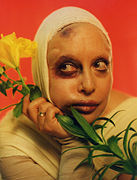



ORLAN is a contemporary French artist known for the radical act of changing her appearance with plastic surgery in the name of art. Similar to the self-portraits of Cindy Sherman, ORLAN uses her face and body as malleable tools for shifting identities. “I have been the first artist to use aesthetic surgery in another context—not to appear younger or better according to the designated pattern. I wanted to disrupt the standards of beauty,” she explained. Born Mireille Porte on May 30, 1947 in Saint-Étienne, France, she changed her name at the age of 15 before studying painting as a young woman. During the 1970s, the artist produced a provocative series of photographs known as Incidental Striptease (1974–1975), in which she took the pose of Sandro Botticelli’s Venus while wrapped in semen-stained sheets. ORLAN began using cosmetic surgery in the early 1990s, basing her new features on Leonardo da Vinci’s Mona Lisa (1503) and François Boucher’s depiction of the goddess Europa, she had her cheekbones, brows, and lips altered. In 2018, the artist was ordered to pay Lady Gaga and Universal Music Group a total of $18,000 in courts fees, after losing her appeal in an intellectual property infringement lawsuit against the pop star. ORLAN currently lives between New York, NY, Paris, France, and Los Angeles, CA. Today, her works are held in the collections of the J. Paul Getty Museum in Los Angeles, the Museum of Contemporary Art Antwerp, and the Museum of Contemporary Art in Los Angeles.
I wanted to look into the work of Orlan as afterwards I wanted to look into the effect that fast food can have on our bodies and how it can modify our outer appearance. Such an extreme level of performance art was very inspiring to me, as it takes something that is not typically viewed as art and incorporates and artistic element into the work. This is an idea that I wanted to carry into my own work as fast food is not typically something that is classed as artistic or a political/social statement, both of which I wanted to incorporate.
0 notes